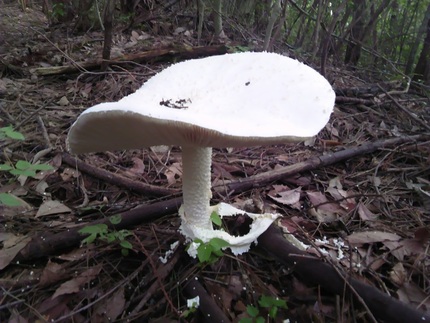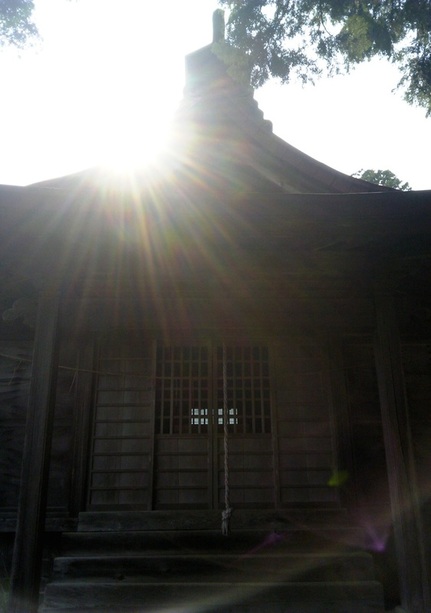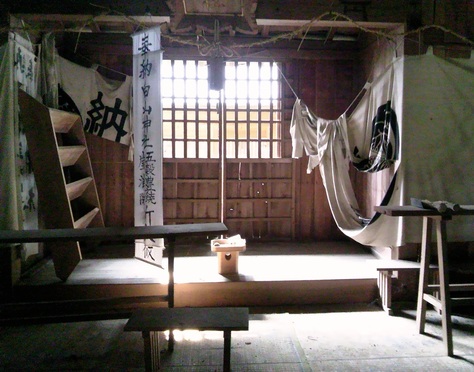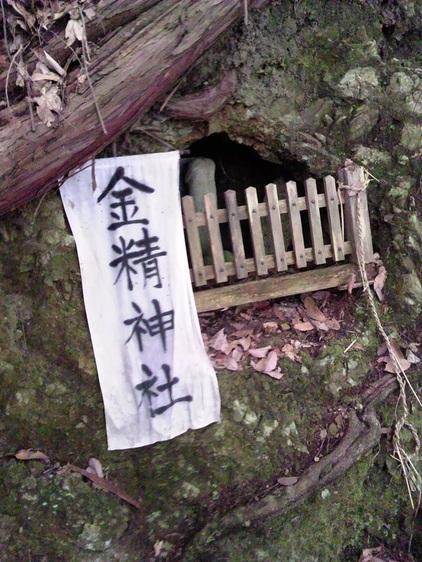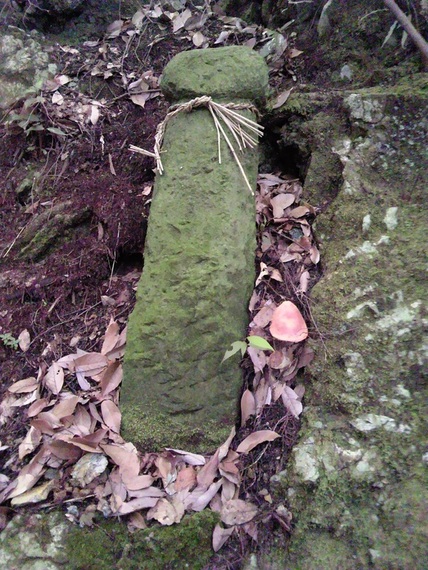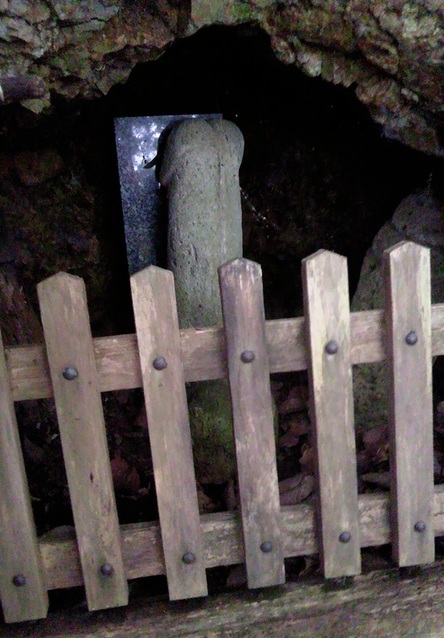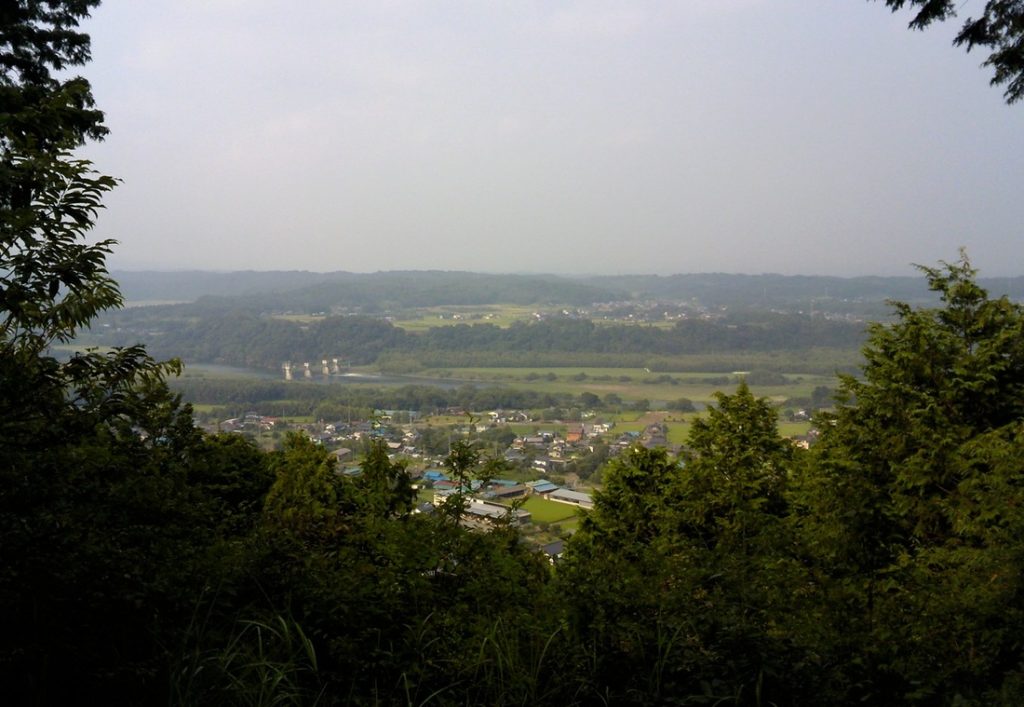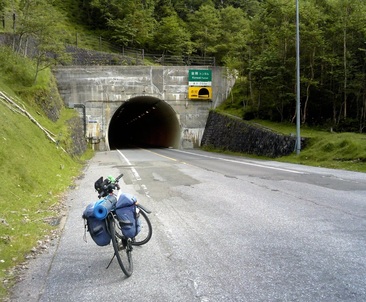The kocho-sensei at my junior high school was originally a science teacher, and under his guidance, the four special needs students do more gardening and botany-based activities than anything on their official timetable. A few weeks before Christmas I joined them in the school allotment to help harvest the
soba (蕎麦 / buckwheat) crop, which was then left to dry in the sun. A few days later the soba seeds, which are wrapped in shiny black husks, were separated out and spread out on a tarpaulin on the classroom floor, and come the spring term the laborious process of transforming them into soba flour will begin.
The next step – known as soba-uchi – is to make noodles from the flour, but with barely enough seeds to produce a single portion of noodles, kocho-sensei went to a nearby farm shop to buy a job lot of flour (which incidentally is expensive stuff: a kilo will set you back more than 1000 yen / £5). With the students still on their winter vacation, he then invited the staff from two nearby elementary schools to join us for a kind of soba-uchi group bonding day.
When I arrived in the morning, kocho-sensei already had a towel tied around his head, something that seems to be a pre-requisite for any activity that might be considered bloke-y. A towel is the headgear of choice for most builders and carpenters, for example, not to mention anyone firing up a barbecue, mowing the lawn or taking part in those festivals where groups of men march through the streets carrying extremely heavy replica shrines. S-sensei – who is my point of contact at the elementary school where I teach once a week – turned up similarly attired, and turned out to be something of a soba-uchi expert.
‘What ratio are you using?’ he asked kocho-sensei.
’Go-wari,’ replied kocho-sensei (go-wari means 50%, and while you can buy juu-wari – 100% – soba at some restaurants, those in the know say that if you mix in a certain amount of wheat flour, it makes the noodles easier to make and tastier to eat).
‘Go-wari?’ said S-sensei. ‘That’s not soba at all, it’s udon!’
‘I’m just trying it out to see what will happen.’
‘Well, it’ll certainly make the dough easy to work with. Not sure what they’ll taste like, though. How much are you making?’
‘500 grams of soba flour and 500 grams of udon flour, so that makes a kilo.’
‘A kilo? That’s way too much!’
‘Don’t worry, I’m going to divide it in half before I roll it out.’
We were soon joined by kyoto-sensei (教頭先生 / the deputy headteacher) and both the kocho and kyoto senseis from S-sensei’s elementary school, and for the first half hour or so I hovered in the background while they got a production line up and running. S-sensei had finished a pristine batch of noodles within about fifteen minutes, and I was surprised to see kocho-sensei struggling somewhat with his, despite being in possession of a brand new soba-kiri hoh-choh (蕎麦切り包丁 / soba knife – these are similar to a meat cleaver but more rectangular, with the handle in the middle as opposed to at one end).
‘Nice knife,’ said elementary kocho-sensei. ‘How much did that set you back?’
‘It was supposed to be 25,000 yen, but it was the last one in the shop, so I managed to haggle him down to 15,000.’
‘I’ve got to go to the staff room and meet someone from the board of education,’ said kocho-sensei after completing his own batch of noodles, ‘so it’s your turn now. Do you fancy having a go at foon-zuké (踏ん付け)?’
‘What’s that?’ I asked him.
‘You put the dough in a plastic bag on the floor and knead it with your feet.’
‘I don’t think we’ve got time for that,’ said S-sensei.
‘True. Well, I’ve measured out a nana-wari (70%) mix, so have a go at that.’
Once you’ve measured out the flour and sieved it into a wide, shallow lacquerware bowl, you gradually pour in one part water to two parts flour and work this in with your fingertips (in this case we were using 250ml of water to 500g of flour, which appears to be the standard amount, and produces enough noodles for about five portions). The mixture gave off a tremendous earthy aroma, and while at first it resemled breadcrumbs or the topping of a fruit crumble, once all the water had been added it soon congealed into a lump of dough about the size of a grapefruit.
The uchi part of soba-uchi means ‘hit’, and I assume refers to the next stage of the process. While you don’t leave the dough to rise as you would for bread or pizza, it still needs to be softened up, which means repeatedly turning it over and squashing it with the heel of your hand: kocho-sensei said that about four hundred ‘hits’ is about right, which takes about ten minutes and requires a fair amount of elbow grease. (The owner of a restaurant in Hokkaido once demonstrated the process to me, and after years of making soba by hand, his forearms resembled Popeye’s in their post-spinach state.)
Contrary to S-sensei, kocho-sensei preferred to add warm water to the flour instead of cold, which made the resulting dough comparatively easy to work with, and I was soon ready for the next step. Again using the heel of your hand, you roughly flatten out the dough on a large chopping board – about 75cm square – and roll it out using a long, thin rolling pin called a menboh (麺棒). Getting the dough down to the correct thickness is easy enough; the tricky part is rolling it into a square instead of a circle.
Elementary kocho-sensei was the expert at this, and explained that once your dough has reached about half the size you want to end up with, you wrap it around the menboh, roll both across the board six times – gently so as not to flatten the dough too quickly – turn the menboh through ninety degrees, unroll the dough, wrap it around the menboh again – this time from the next ‘corner’ of the square – and repeat the process. At least in theory, this should stretch the four corners of the dough and leave you with a square that is slightly smaller than the chopping board.
Using the menboh to lift up one edge of the dough, you then fold it in half, fold it again lengthways, and once more end-to-end, leaving you with an eight-layered rectangle approximately thirty centimetres long by fifteen centimetres wide. The important thing at this stage is to to sprinkle some uchiko (打ち粉 / spare soba flour) over the dough before each fold – something that I neglected to do on my first attempt, and which resulted in my noodles sticking together in the way that spaghetti can if you forget to stir it as it’s cooking.
Now it was time for the fun part, namely getting my hands on that hefty soba knife. As a rule, Japanese chefs wield their kitchen knives slightly differently from us Europeans, so that rather than using the point of the knife on the chopping board as a pivot and lowering the blade in an arc towards the body, here you hold the knife above and parallel to the chopping board, and keep it level as you cut downwards and slightly away from the body.
To cut noodles, you also need something called a koma-ita (小間板), which is a kind of wooden paddle with a handle on top and one straight edge. Being careful not to exert too much pressure, you place the koma-ita at one end of the dough with a millimetre or two of dough exposed. Using the straight edge as a guide, after each downward cut you keep the blade on the chopping board and lean the soba knife slightly to the left, nudging the koma-ita ever so slightly in the same direction, and leaving it in just the right position to guide you for your next cut.
‘You cut fifteen times for each portion,’ said elementary kocho-sensei. ‘Then you slide the noodles to the edge of the board and pick them up gently with your right hand. Tap them on the board like this’ – lowering one end of the handful of noodles onto the board not only got rid of any excess flour, but also separated any noodles that hadn’t been cleanly cut – ‘then hold the other end in your left hand and do the same thing again. Give them a bit of a twist before you lay them out,’ he said. ‘Makes them look more appetising, doesn’t it?’
At the other end of the kitchen, the tea lady, the school nurse and the home economics teacher had been cooking away for most of the morning, and just outside, the elementary kyoto-sensei was simmering the noodles for a few minutes at a time over a gas burner in a huge cooking pot. They were then rinsed in cold water and arranged on large, flat, basket-like trays before being carried into the next room, where tables had been laid for the forty or so teachers, who by midday had begun to arrive for lunch.
A posse of them soon crowded round to check on my progress, and having concentrated so hard on trying to produce the perfect soba, I was exhausted by the time I completed the final cut.
‘Full marks! Very good!’ said elementary kocho-sensei, and while my noodles weren’t as uniformly slender as S-sensei’s (who did, I was interested to see, have at least one mini-crisis, when a batch of dough became irreparably creased as he was rolling it out and almost forced him to start again from scratch), they didn’t look quite as flat, wide and tagliatelle-like as some of the others that were on show.
As well as being comparatively low in calories, the completed noodles have an attractive, speckled appearance – the tiny black dots are leftover fragments of husk – and today we had a choice of hot miso-based soup with pork and vegetables (kenchin soba) and cold, soy sauce-based soup with wasabi and spring onions (zaru soba) in which to immerse them. One of the teachers at my table told us about a restaurant in Mito where you can order soba sushi, soba dumplings and even soba ice cream, but for the moment at least, I think I’ll stick to good, old-fashioned noodles.
